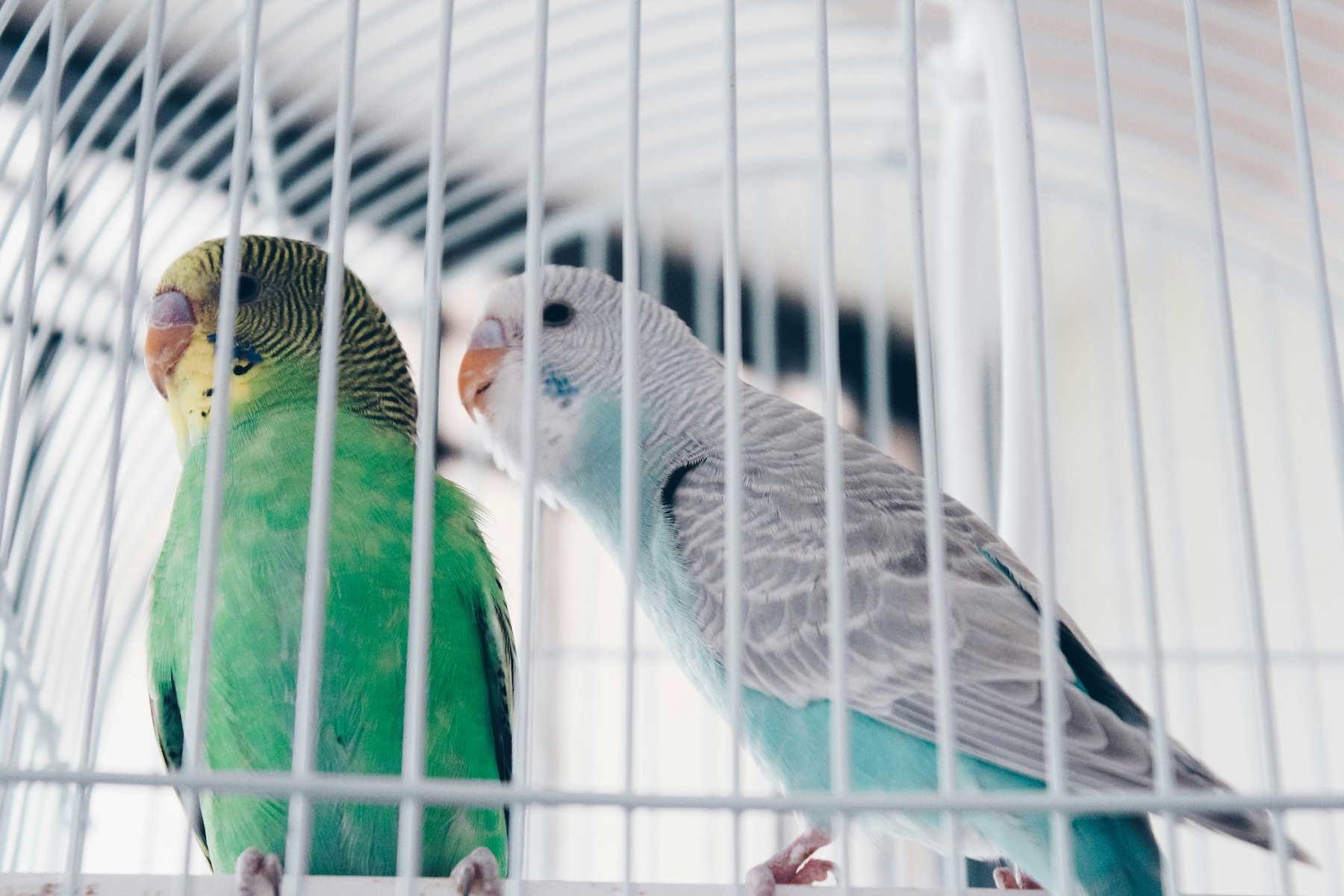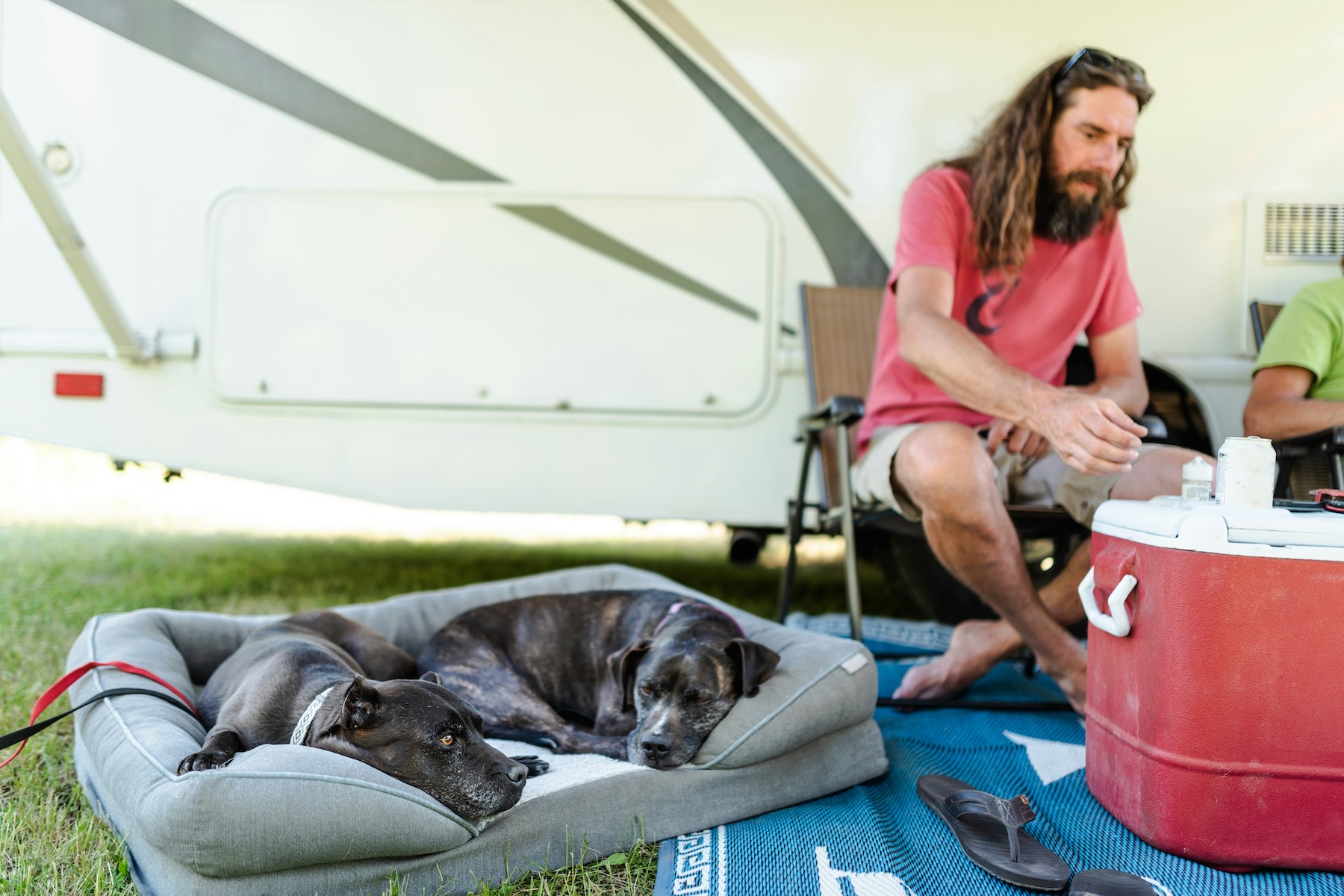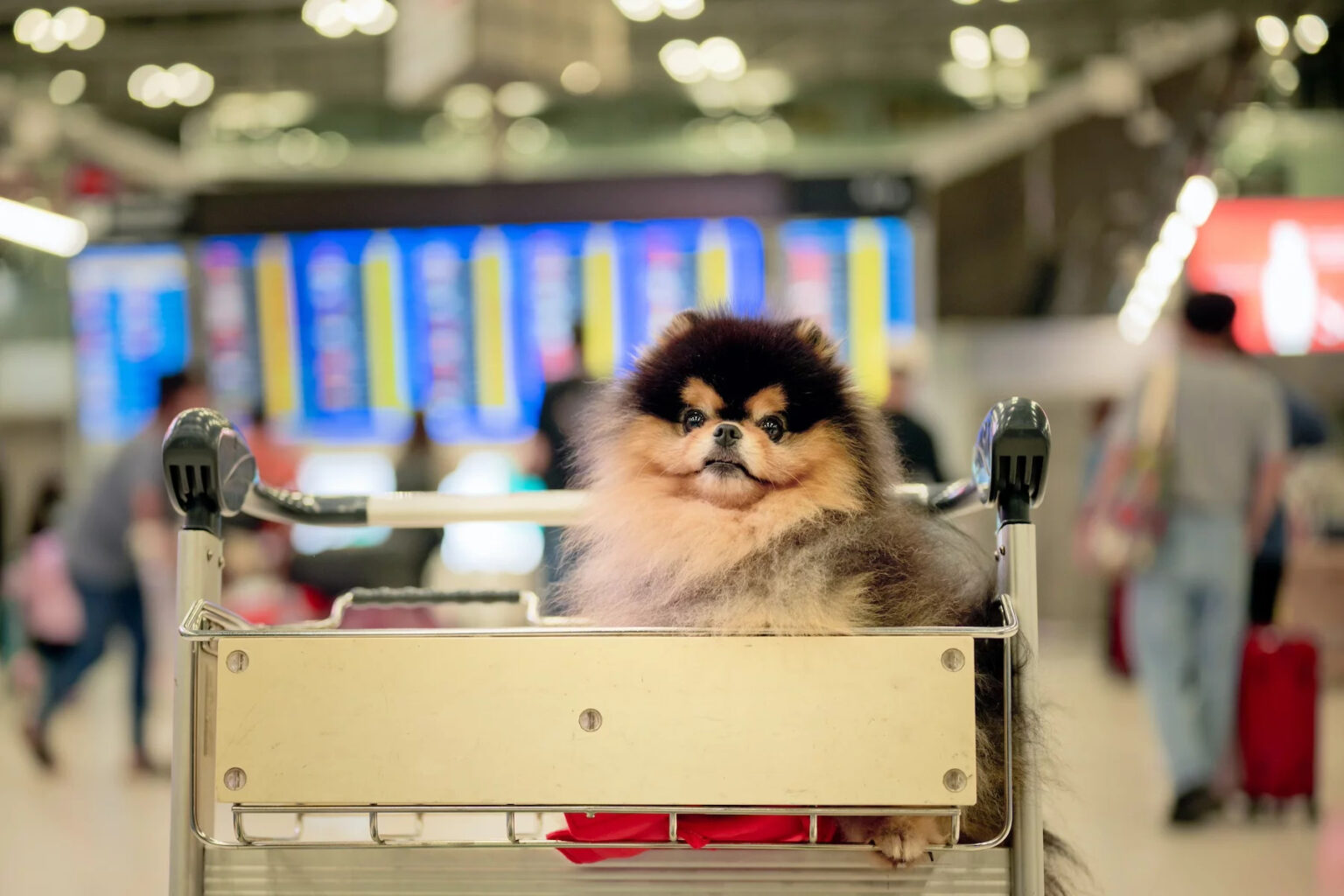Pets are welcome in France, but there are strict rules relating to bringing pets into the country. If you plan to take a pet to France, it’s important to check the latest French regulations. Make sure you have the correct papers for France, as well as all the countries you pass through. Be aware that these may differ from country to country depending on where you are relocating your pet from.
This article includes the following topics:
French pet import regulations
You can bring up to five pets into France, and you must either travel together or arrive within five days of each other.

Rules for dogs, cats, and ferrets
Dogs, cats, and ferrets must have an EU pet passport if coming from an EU/EFTA country. This provides essential information such as ID number and vaccine information. Other pets traveling from EU/EFTA countries will need a passport or an EU animal health certificate signed by a licensed vet.
All pets from non-EU/EFTA countries must be declared to French Customs. All dogs, cats, and ferrets (in French) need to have either an EU pet passport or the following:
- Microchip ID (or visible tattoo if before 3 July 2011)
- Evidence of recent rabies vaccine at least three weeks before travel. Pets from a country with a high incidence of rabies must have a Blood Titer Test one month after vaccination and three months prior to departure.
- Health certificate signed by a vet (valid for 10 days)
Dogs must have at least one adult tooth in order to enter France.
Rules for small animals
Most other small pets need to have a health certificate signed by a licensed vet (valid for 10 days). Additionally, all birds traveling to France must meet one of the following conditions to combat the spread of avian flu:
- Isolation for 30 days prior to travel
- Avian flu vaccination within the last six months, but not within the last 60 days
- Negative flu test result taken on the fourth day of isolation, followed by 10 days in isolation
Birds imported to France must also avoid any large events or gatherings featuring birds for their first 30 days in France.

Larger animals such as horses or monkeys must undergo a veterinary inspection when arriving at the French borders. Certain species and animal products classified as protected specimens, for example Gabonese grey parrots and sea turtles, are subject to special regulations and you will need prior permission before importing them to France.
How to get an EU pet passport
EU pet owners must now have pet passports when traveling with their animals (dogs, cats, or ferrets). The passports include the pet’s microchip or tattoo number for identification. It also includes other data such as owner details, description of the animal (breed, sex, age), vaccination records, and clinical examinations.
You can get an EU pet passport from any licensed vet in most EU countries. To obtain a pet passport, you will usually need to provide:
- Your own valid ID
- Proof of address, for example a recent utility bill
- Rabies vaccine information
- Microchip ID number for your pet
The cost of pet passports varies but is usually between €20–100, depending on where you get it. You can get a pet passport from many vets in countries outside the EU. If you don’t have a pet passport, you will need an animal health certificate signed by a licensed vet to enter France with your pet.
Does France require pets to quarantine?
Pets in France don’t need to undergo any quarantine period unless they fail to meet the entry requirements regarding vaccines, health checks, or identification. If this is the case, the animal may be returned to their country of origin or, in extreme cases, euthanized.
Once in France, you may have to follow specific other procedures depending on your type of pet – for example, registration or liability insurance. See the relevant sections below for details.
Does France ban any dog breeds?
The French government classifies dogs that resemble or are physically similar to a mastiff, tosa, or pit bull as attack dogs. You cannot bring dogs fitting this description to France unless you can prove that they are purebred for the purposes of guarding or defense, and that they’ve been sufficiently trained so as not to pose a threat to anyone’s safety.

Read more about Category 1 and Category 2 restricted dogs on the Service-Public.fr website.
Choosing a pet relocation company
To make things easier, you can use a pet relocation company that deals with all the necessary paperwork and ensures the safe transportation of your pets. This is a good option if you’re unable to travel alongside your pets.
Reputable companies providing pet relocation services to France include:
Traveling to France with your pet
You can travel to France with pets by plane, train, or bring them in your vehicle if you’re driving. Regardless of your method of travel, it’s critical that your pet be in a well-ventilated container for the duration. Be sure to label the container carefully and provide enough food and water for the entire journey.
Taking pets on a train
Whether or not you can bring your pet on a train depends heavily on its size, the train company, and your origin and destination. Train companies have their own regulations, but most allow small dogs, cats, and rodents as long as they are in the right container.
Some train companies, like Eurostar, do not allow pets apart from service dogs, so it’s very important to check the rules online beforehand and reach out to their customer service if it’s unclear.
While train journeys tend to be longer than flights, they can be a good option for causing less stress on pets. This is especially true of snub-nosed breeds that may have trouble breathing on a plane or in stressful situations.
Can your pet fly in the cabin with you?
If you have a cat or a small dog, most airlines will allow your pet to travel with you on the flight in the passenger cabin. You must keep them in a secure travel bag or kennel that fits under the seat in front of you (i.e., 55 x 40 x 23 cm).
Rules vary by airline and depend on your destination, but generally, you’re allowed one pet per person, and only two animals can fly in the cabin at once. The weight limit for the pet in its carrier is around 8kg, and animals must be at least 12 weeks old to fly.
Bringing your pet in the cabin usually costs around €100 but can be up to €400 for long-haul flights. You should notify the airline ahead of time that you’ll be bringing a pet on board to avoid extra fees or disruptions.
Note that snub-nosed animals – certain breeds of cats and dogs that are prone to breathing problems – can only fly in the cabin. Airlines will not agree to transport these animals in the hold or as cargo for their safety and comfort.
Pets in the hold or transported as cargo
If you have a medium or large dog, or a different type of pet that you’d like to bring to France, you likely need to transport them either in the hold (on the same plane as you) or as cargo (where they travel separately).
The price varies greatly depending on how long the flight is, whether your pet needs special accommodations, and if you have a layover. For pets other than cats and dogs, it’s best to discuss your situation with the airline before booking a flight to see what’s permitted and which airports you can travel through. Lufthansa, for example, has a dedicated website for animal transport.
The International Air Transport Association (IATA) sets strict rules regarding approved pet travel containers, which have been accepted by most global airlines. Read the IATA requirements before you travel with your pet abroad.

To travel in the hold or as cargo, your pet must be in an IATA-compliant pet crate and meet certain other requirements. It is considered best to have only one animal per container, but the IATA rules state that two animals can share the same container if the animals are less than 14kg each and the same species.
Airline-approved pet carriers
If you are purchasing a container, make sure that it meets these minimum requirements:
- The container must be large enough for the animal(s) to stand, turn around, and lie down
- The kennel must be sturdy plastic
- The container must have a secure, spring-loaded, all around locking system with the pins extending beyond the horizontal extrusions above and below the door
- Both water and food bowls must be attached to the inside of the front door and be refillable from the outside of the container without opening the door
- The container must have ventilation on all sides for international travel and three sides minimum for domestic travel
- The container must have ‘Live Animal’ stickers on the top and sides in letters at least one inch tall
- If the container normally has wheels, remove or tape them securely so that the kennel cannot roll
- The container must be identified with your pet’s name and owner’s contact information. The best way to do this is to attach your pet’s information to the outside of the crate.
- Make sure to attach an extra copy of your pet’s health certificate to the container
Traveling with a guide dog or service animal
Rest assured, you have the right to travel to France with your service dog by your side. Regardless of the policies of airlines or train companies regarding pets, passengers who can demonstrate a medical need and provide proof of sufficient animal training are entitled to bring their service dog with them.
However, preparing your service dog for travel requires a lot of paperwork and documentation, so be sure to plan well in advance. For example, AirFrance requires 48 hours’ notice in the case of assistance dogs, which goes up to 96 hours if you’re coming from the UK or UAE.
The process varies depending on your means of transportation and where you’re coming to France from. For example, if you’re flying from the US to France, you must also submit forms with the US Department of Transportation before you can fly.
After arriving in France with your pet
You must register any pet dogs, cats, and ferrets in France with Identification des Carnivores Domestiques (I-cad), the national pet identification database overseen by the Ministry of Agriculture and Food. If your pet has been microchipped, you just need their chip number. Older animals may have tattoos instead.
Ensuring the timely registration of your pets is not just a legal requirement but also a responsible act. You should microchip your dog by four months old and cats by seven months. If you’re bringing your pets to France, it’s crucial to register them with I-cad as soon as you arrive in case they are ever lost or stolen.

For horse owners, you must register your horse in France with the IFCE.
Useful resources
- Canidea – a guide for service dogs traveling to France
- European Union pet passports – EU rules on traveling with dogs, cats, and ferrets across borders
- IATA – container requirements PDF for transporting pets by airplane
- National Identification File of Domestic Carnivores (Identification des Carnivores Domestiques – I-cad) – registration database for pets in France (in French)
- NS International – guide to transporting pets by train
- Service-Public.fr import rules – government website with restrictions on importing dogs and cats




